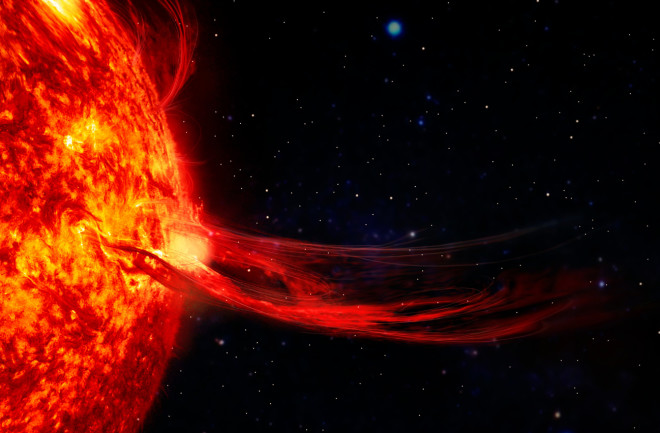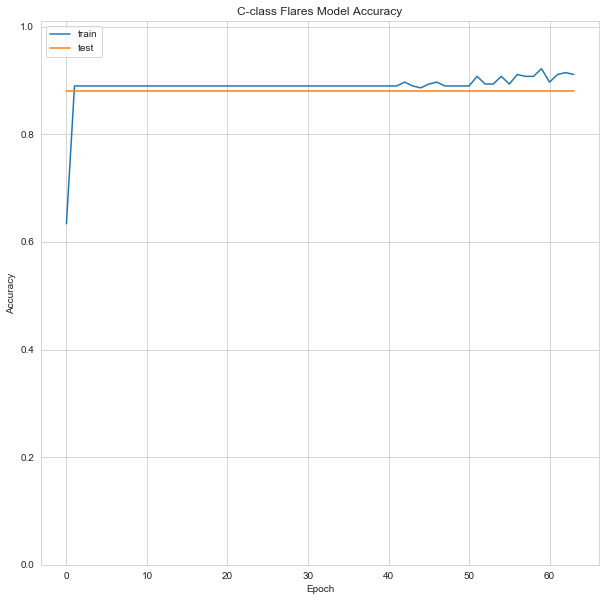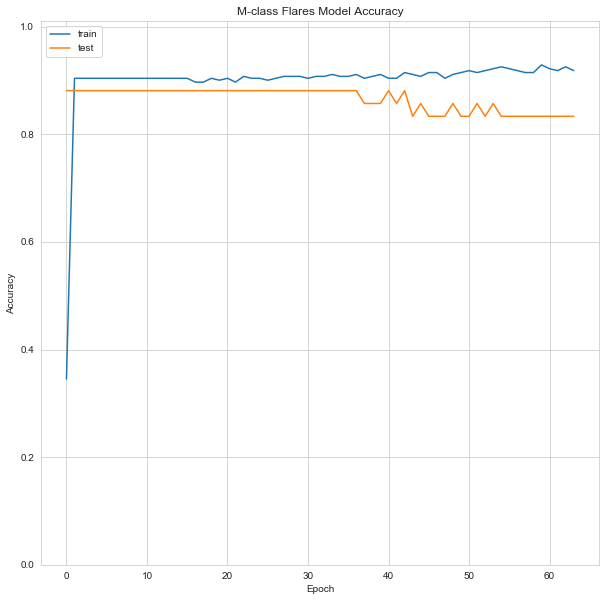Picture Source:ctfassets.net
The purpose of this study is based on the available data, it was estimated numbers of the solar flares production in spesific region on sun in the following 24 hours (with classes). I made multi-output neural network model for the predict dependent variables. Accuracy can change due to parameters. Please let me know the best parameters. You can run, modify and download your own model from codes. Accuracy can change due to parameters. Please let me know the best parameters.
- Multi-Output
- Neural Networks
- Space
- Sun
- Classification
- Deep Learning
Datasets are downloaded from archive.ics.uci.edu website. You can find the details of the datasets in that website and also in the flare.names named file. flare.data1 dataset has 13 columns and 323 rows without the header and flare.data2 dataset has 13 columns and 1066 rows without the header. The database contains 3 potential classes, one for the number of times a certain type of solar flare occured in a 24 hour period. Each instance represents captured features for 1 active region on the sun. The data are divided into two sections. The second section (flare.data2) has had much more error correction applied to the it, and has consequently been treated as more reliable. This informations had refered from archive.ics.uci.edu website.
Attribute Information:
- Code for class (modified Zurich class) (A,B,C,D,E,F,H)
- Code for largest spot size (X,R,S,A,H,K)
- Code for spot distribution (X,O,I,C)
- Activity (1 = reduced, 2 = unchanged)
- Evolution (1 = decay, 2 = no growth, 3 = growth)
- Previous 24 hour flare activity code (1 = nothing as big as an M1, 2 = one M1, 3 = more activity than one M1)
- Historically-complex (1 = Yes, 2 = No)
- Did region become historically complex on this pass across the sun's disk (1 = yes, 2 = no)
- Area (1 = small, 2 = large)
- Area of the largest spot (1 = <=5, 2 = >5)
From all these predictors three classes of flares are predicted, which are represented in the last three columns.
- C-class flares production by this region in the following 24 hours (common flares)
- M-class flares production by this region in the following 24 hours (moderate flares)
- X-class flares production by this region in the following 24 hours (severe flares)
Donor:
Gary Bradshaw: gbradshaw@clipr.colorado.EDU
Please look at pred_solar_flare_class_ann.ipynb file to see more details about the structure. You can see the multi-output model structure on the below. It gets inputs as 9 independent variables and gives 3 outputs (C, M, X classes).
Every class has different dense layer before the output layer. c_output has 32, m_output has 64 and x_output has 16 neurons. c_output be retrived directly from dense_3, m_output be retrived directly from dense_4 and x_output be retrived directly from dense_5. You can use the model model with loading my_model.h5 or you can use the whole model here.
If you have something to say to me please contact me:
- Twitter: Doguilmak
- Mail address: doguilmak@gmail.com




